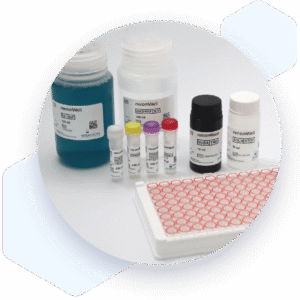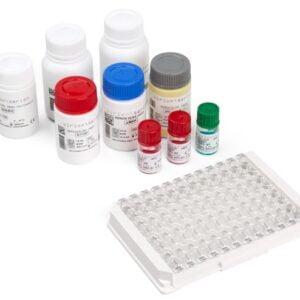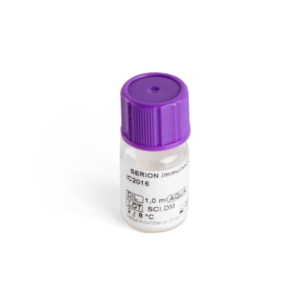| Weight | 1 lbs |
|---|---|
| Dimensions | 9 × 5 × 2 in |
| target | Brucella reactive IgA |
| species reactivity | Brucella |
| applications | ELISA |
| assay type | Indirect & quantitative |
| available sizes | 96 tests |
Brucella IgA ELISA Kit ESR116A
$364.00
Summary
- Virion/Serion Diagnostic Kit for research use (RUO)
- Brucella IgA ELISA Kit
- Suitable for IgA detection
- Ready-to-use
- 96 tests
Brucella IgA ELISA Kit ESR116A
| kit | ||||||||||||||||||
|---|---|---|---|---|---|---|---|---|---|---|---|---|---|---|---|---|---|---|
| Assay type Indirect ELISA | ||||||||||||||||||
| Research area Infectious Disease | ||||||||||||||||||
| Sample type Serum, plasma, whole blood | ||||||||||||||||||
Components
| ||||||||||||||||||
| Storage Store at 2-8°C. | ||||||||||||||||||
| Associated products Brucella abortus Antigen (BA116VS) Brucella IgA Control Serum (BC116A) Brucella IgG Control Serum (BC116G) Brucella IgM Control Serum (BC116M) Brucella IgA ELISA Kit (ESR116A) Brucella IgG ELISA Kit (ESR116G) Brucella IgM ELISA Kit (ESR116M) |
| target relevance |
|---|
| Organism Brucella abortus |
| Protein names Brucella |
| Structure and strains Brucella abortus is a Gram-negative bacterium in the family Brucellaceae and is one of the causative agents of brucellosis. The rod-shaped pathogen is classified under the domain Bacteria. The prokaryotic B. abortus is non-spore-forming, non-motile and aerobic. |
| Detection and diagnosis Direct pathogen detection in culture systems can be performed with punctates from blood, bone marrow, synovia or urine. In this regard the special demands for nutrients have to be taken into account. More rapid results are obtained with serological methods such as agglutination tests. For differentiation between acute and chronic brucellosis, sensitive and specific ELISA test with separate detection of IgG, IgM and IgA antibodies are recommended. |
Data
Publications
| pmid | title | authors | citation |
|---|---|---|---|
| We haven't added any publications to our database yet. | |||
Protocols
| relevant to this product |
|---|
| ESR116A protocol |
Documents
| # | ||
|---|---|---|
| Please enter your product and batch number here to retrieve product datasheet, SDS, and QC information. | ||
Only logged in customers who have purchased this product may leave a review.





Reviews
There are no reviews yet.